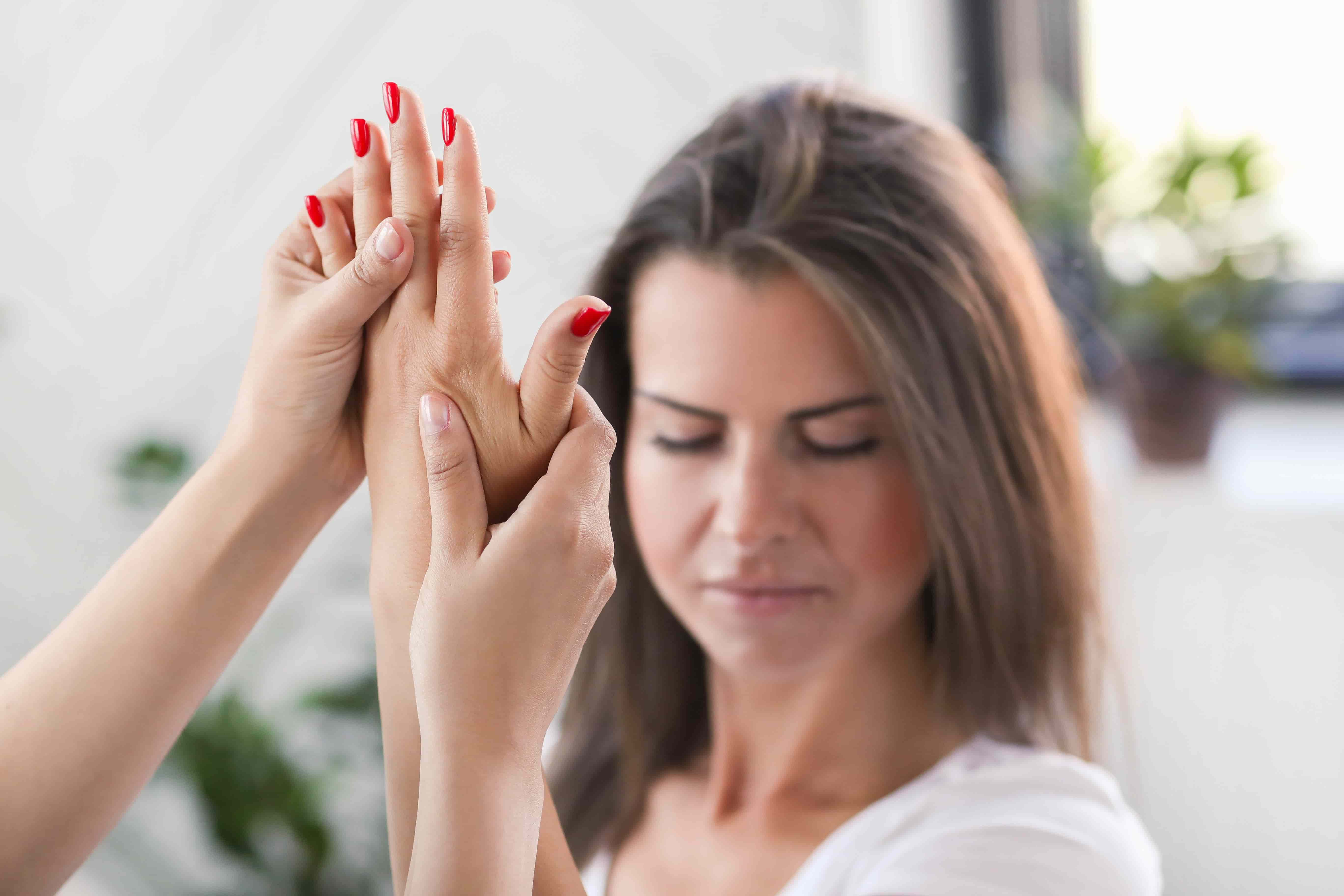
In the modern world, where our daily lives are tied to the use of technology, the health of our hands and wrists has never been more crucial. We do not really notice that we spend hours sitting in front of laptops, typing and clicking, which puts additional pressure on our hands. In this context, it is essential to understand how to avoid carpal tunnel, a syndrome that is a real health concern for millions of people.
Carpal Tunnel Syndrome accounts for 90% of all neuropathies when the nerves outside your brain or spinal cord are damaged. Moreover, it has an incidence of 1 to 3 persons per 1,000 in the United States annually. In other words, it is one of the most common hand diagnoses in a surgeon’s office, and according to some estimates affects 1-5% of the adult population.
This article will explore the main causes, symptoms and will recommend how to stop carpal tunnel with the use of certain techniques.
What Is Carpal Tunnel Syndrome?
It is a common condition that occurs when the median nerve that travels through the carpal tunnel wrist is squeezed or compressed. The tunnel represents an inch-wide narrow passageway in the hand, while the median nerve is one of the main nerves in the arm.
Carpal Tunnel Syndrome (CTS) occurs when the tunnel becomes narrowed or when the tissue swells, putting pressure and reducing blood supply to the median nerve. This condition is common for people between 40 and 60, and only 31% of patients are younger than 30.
According to statistics, in most cases, only one hand, often used for writing or working with a mouse, is affected. However, CTS can occur in both hands as well, but the severity of symptoms may vary between wrists.
The causes of the syndrome include mechanical problems in the wrist joint, trauma or an injury, rheumatoid arthritis, and other health conditions. Certain occupations are also associated with the syndrome, as repetitive use of vibrating tools or wrong wrist position increases the risk of carpal tunnel.
In addition, women are more likely to develop CTS as hormonal changes during pregnancy can cause swelling, which in turn puts pressure on the median nerve.
Typical Symptoms of Carpal Tunnel


In general, the pain or a burning sensation in carpal tunnel syndrome is felt in the wrist, palm, and fingers. In most cases, it occurs at night and is noticeable upon waking.
The early symptoms are:
- tingling in the thumb, index, middle, and ring fingers
- numbness
- swollen fingers
The tingling sensation can radiate up the arm, and there can be pain ranging from a dull ache to sharp jolts. As the condition gets worse over time, the patients may feel the symptoms and signs during the day as well.
In this case, tingling during the day is especially obvious when doing small daily routine tasks like driving, opening doors, or turning the doorknob and fastening buttons. The pain may also progress and worsen at night, and even lead to certain loss of movement in the hand and inability to grasp small objects.
Thus, it is important to diagnose the syndrome and treat it promptly since, like any chronic condition, it contains certain risks. Chronic wrist and hand pain, atrophy, weakness of the muscles as well as permanent impairment are among possible complications. By recognizing the warning signs, an individual can mitigate the risk and consult the doctor to take necessary tests.
Exams and Tests to Identify Carpal Tunnel
Diagnosing CTS involves a careful assessment that may combine medical history evaluation, physical examination, and specific tests. After a quick inquiry about general health and daily activities to determine potentially contributing factors, doctors move on to the examination.
The physician examines wrists, hands, arms, and shoulders to check for swelling, tenderness, and sensitivity in fingers. For example, during the Tinel test, doctors press the palm to see if there is tingling in the fingers. Another option is to conduct Phalen’s test when a patient is asked to flex the wrists in a position that puts light pressure on the median nerve. In the case of CTS, the patient feels numbness or tingling in the fingers within a minute.
The next step is an electrophysiological test which examines muscle functioning and detects early nerve damage. Diagnostic imaging, including X-rays, ultrasound imaging, or magnetic resonance imaging, also helps detect CTS.
5+ Working Tips on How to Avoid Carpal Tunnel
Prevention of carpal tunnel syndrome is a combination of ergonomic practices, doing exercises, and making lifestyle adjustments. It is possible to significantly reduce the risk of developing CTS by adopting healthy habits and being careful in how we use our hands and wrists.
If you wonder how to avoid carpal tunnel, first, it is important to maintain proper wrist position not to apply pressure to the median nerve. This starts with prioritizing ergonomic setups, taking regular breaks to stretch and do exercises, or wearing a wrist brace.
One of the main causes of the syndrome is the repetitive and stressful movement of the hands. Therefore, there are real chances to reduce the development of this condition by transforming health habits and bringing change in your lifestyle.
1. Set Up Your Desk Accordingly


2. Practice Healthy Typing and Computer Use Habits


Keeping hands, wrists, and forearms straight and parallel to the floor while working on a computer is an important factor in preventing carpal tunnel. The user has to ensure that the fingers are gently curved and ready to strike the keys with minimal effort. Position your fingers over the keys and then strike, and do not forget to relax the thumb. Overall, while typing, the body weight should not be shifted to the wrists by resting on them.
Use touch typing techniques when each finger has its own section of the keyboard while the user is typing with the help of muscle memory without looking at the keyboard. This method prevents bending over the keyboard and promotes good posture.
It is also important to keep a minimum 35-centimeter distance from the screen and take regular breaks from looking at the monitor by using a 20-20-20 rule. It’s a great exercise to prevent eye strain by looking away at something 20 feet away for 20 seconds every 20 minutes.
If you want to learn how to keep your distance and take breaks regularly, check new software solutions like Bliink.
It is an AI-powered tool designed to improve digital health with a set of features to prevent vision and posture-related problems. This tool, with a user-friendly interface, can become one of your computer use habits.
3. Stretch and Exercise Through the Day


Regular stretching is a powerful strategy and one of the ways to prevent carpal tunnel. Together with yoga, it helps in maintaining optimal hand and wrist health.
In general, practicing yoga alleviates tension and improves the movement as well as the overall function of your hands and wrists. There are many exercises to reduce the chances of experiencing this syndrome. For example, Downward Dog Pose is a way to gently stretch and strengthen the wrists. You can start by opening and closing your hands and then moving the wrists as if you are flicking water out of your fingers. Another option is to interlace the fingers and draw 8 with your wrists a couple of times in each direction.
Stretching throughout the day will also relieve the symptoms, but remember you should stop once you feel discomfort and see the doctor immediately if the pain worsens. For example, you can do a so-called prayer stretch with your palms pressed together. Put them in front of your chest, keep them pressed near your stomach, and lower them to the waistline. Repeat it 2-4 times, holding the position for 15-30 seconds.
4. Avoid Repetition
CTS often stems from repetitive movements while performing routine tasks at work. This syndrome is considered an occupational disease as it contains risks related to work, especially in the case of manual and repetitive jobs. The syndrome is typical for such occupations as assembly workers, musicians, hairstylists, or bakers. To sum up, It may occur if a person is holding devices or equipment in the hand for a long period of time.
Years of continuously using the same joints and muscles lead to problems, and it’s important to rotate between tasks to mitigate the strain.
If you feel that you use your right hand more often, simply switch to your left hand during the day. Scheduled breaks will prevent prolonged strain on vulnerable parts of your wrist. Together with improved ergonomic practices and regular breaks, diversifying tasks can help relieve discomfort.
5. Wear a Wrist Brace
In case you cannot give up repetitive tasks, wearing a wrist brace or a splint can mitigate symptoms and provide support. When wearing such a brace, the wrist is in a neutral position, and the pressure on the median nerve is minimized.
The research shows wearing a hand brace or a wrist splint is useful for patients with CTS. Some people prefer to wear it while they sleep. Once you take it off, make sure to move the wrist to avoid too much stress and pressure on the nerves.
There are a variety of braces, and you can choose between sizes, types, and materials. Some resemble a glove, while others restrict finger and hand movements. Make sure to choose a durable and breathing fabric as you wear it for extended periods. Anyway, it’s better to consult a healthcare professional before using any braces to avoid complications.
6. Be Proactive in Seeking Professional Advice


Recognizing the importance of timely professional advice is important to avoid complications. The symptoms can worsen and become more severe if remain untreated. While self-care may relieve the pain, in some cases, it is not enough to manage this condition effectively.
The common symptoms interfering with your daily activities and sleep pattern is a warning sign to immediately make an appointment with your doctor. They include pain in your fingers, burning, numbness, dropping things more often than usual, and weakness in your hands. In addition, a person can experience less strength in the hands because the muscles begin to shrink.
Putting off a doctor’s visit could lead to irreversible muscle and nerve damage. However, consulting a physician does not mean you will have to undergo surgery. If diagnosed early, you will receive treatment recommendations, guidance on lifestyle change, or tips on what wrist brace to wear.
Treatment: How to Stop Carpal Tunnel?
There are various treatment approaches to address the carpal tunnel syndrome. It is important to diagnose the condition in the early stages as it may be possible to stop the progression of the disease. First of all, the underlying causes, such as arthritis or diabetes, have to be treated.
Treatment techniques range from conservative methods such as physical therapy, bracing, and steroid injections to surgical intervention. The aim of the treatment is to reduce pain and improve the functionality of hands and fingers for a person to get back to his daily activities without feeling discomfort. A patient may also need urgent surgery if there is an uncommon acute condition.
Nonsurgical Treatment
The initial treatment of CTS is wearing a wrist brace for a split at night. This helps maintain a neutral position while sleeping to ease pressure on the median nerve.
The doctors recommend avoiding daytime activities aggravating symptoms and advise applying cool packs if the wrist is red and swollen. The professional can also advise hand exercises or some alternative methods like acupuncture.
In some cases, physicians prescribe medications such as ibuprofen to provide temporary relief from pain. If symptoms persist, corticosteroids that have anti-inflammatory and immunomodulatory effects may be used. Oral corticosteroids decrease swelling and inflammation in case of mild symptoms, while corticosteroid injections are prescribed for more effective treatment. Keep in mind that consulting a doctor before taking any medications is obligatory to prevent adverse drug reactions. An unwanted harmful reaction can be a minor common side-effect or a life-threatening allergy with awful implications.
These methods focus on alleviating symptoms and improving the functionality of the wrist and fingers without resorting to surgical intervention.
Surgical Treatment
If symptoms do not respond to non-surgical treatments and problems with painful sensations persist, the doctors would recommend surgery. It is a common procedure and can be performed with two different techniques:
- Open surgery. The doctor makes an incision and cuts the carpal ligament to free more room for the nerve and tendons passing through the tunnel. The procedure is done under local anesthesia.
- Endoscopic surgery. During endoscopic carpel tunnel release, a tiny incision is made to put a thin, flexible tube with a camera into the hand. The doctor can see the nerve and cut the carpal ligament with special equipment inserted through the tube.
As with any other surgical intervention, carpal tunnel surgery poses certain risks, such as wound infection, injuries to the nerves, stiffness, or scar formation. A full recovery may last from several weeks to several months, and the surgeon may also recommend modifying physical activity during the next several weeks.
Summing Up
Prevention is a key strategy to reduce the risk of developing carpal tunnel syndrome.
By incorporating healthy habits into your lifestyle, it is possible to avoid surgical intervention and further complications.
Follow our simple tips:
- Take care of workstation ergonomics
- Practice stretching and other exercises
- Take regular breaks to relieve negative effects
Embrace the benefits of the innovative features of the Bliink application to be notified about taking digital breaks and improving your posture to achieve long-term results. If you want to take proactive steps to improve your health habits, download Bliink and give it a try.
